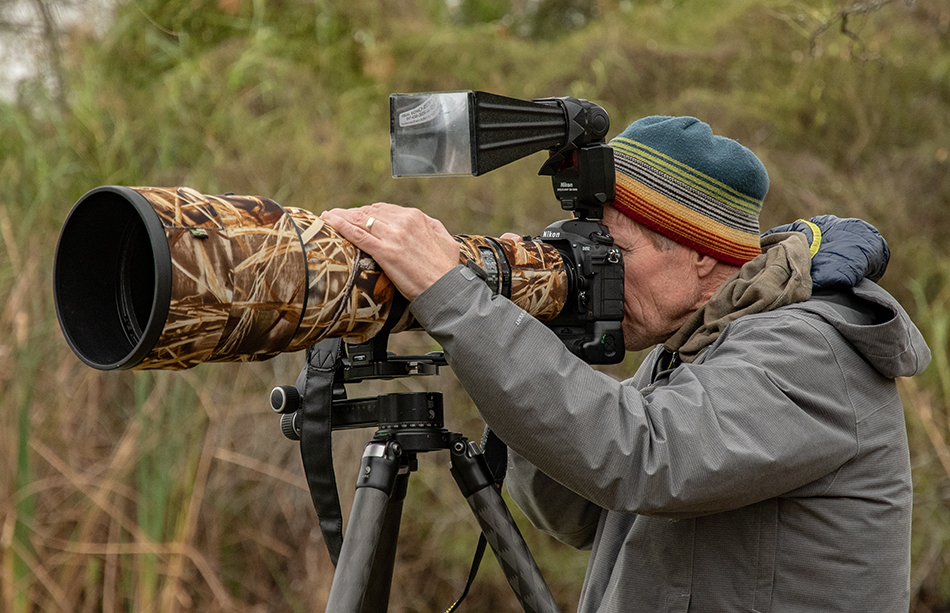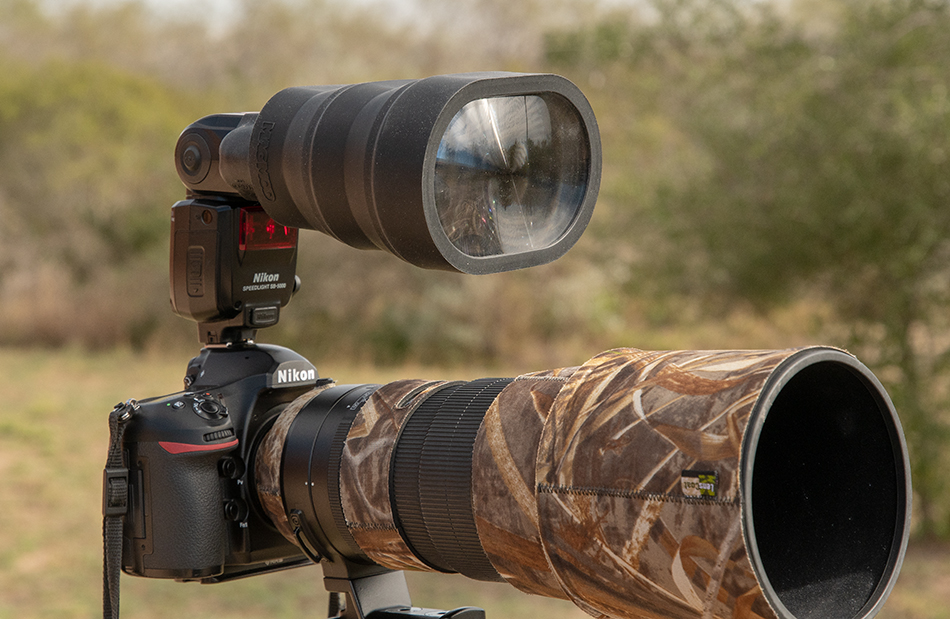
Edinburg, Texas.
I just returned from an assignment photographing birds in Texas for an upcoming magazine story. Contrary to what I expected, we didn’t get endless sunny days. Instead, cool wet weather was the norm. This diffused light is great for photographing birds; less contrast, saturated colors and you can shoot all day. But you loose the warm light and specular catchlights sunny days provide. If you don’t like the light, then make your own light!

Edinburg, Texas.
I decided to use a speedlight with flash extender to add just a kiss of light to some of my bird images. The standard for flash extenders has been the Better Beamer. This inexpensive accessory attaches to your flash head using a velcro strap. The flash is projected through a fresnel lens, increasing the effective distance of your flash. You can reach out to 100 feet and more using a flash extender. Generally speaking the flash will go much further than you need it to, even if you are using a 600mm lens. The image above shows me using a Better Beamer photographing night herons on an overcast day. I like the beamer because it is light, inexpensive and packs down to nothing in my backpack.

Edinburg, Texas.
Another flash extender has entered the market, this one designed my MagMod. The MagMod system (see image above) also uses a fresnel lens to increase the flash range. But the MagMod system uses a magnetic system that attaches the flash extender to the speedlight, very quick and easy. The rubber flash extender expands in length and you are ready to go. I found both flash extenders to do a similar job, but the MagMod system will appeal to devoted flash users since they offer numerous other attachments like gels, snoots and grids. The MagMod system is not as light as the Better Beamer, but offers other flash attachment accessories. If you want the lightest (and most compact) flash extender, then consider the Better Beamer.
Do you really need to use flash on bird images? I generally don’t use flash with bird photography, unless the conditions require it. In Costa Rica in the jungle the contrast is challenging, and a little flash can help add fill light and reduce contrast. On flat overcast days a little flash can pop color and add catchlights to birds. But remember you can get eye catchlights on overcast days too, it depends on the bird’s head/eye direction relative to the light and camera. I’ll talk more about flash extender technique in a post next week. We were so impressed with the bird photography from blinds last week we are going to offer a workshop for a small group. Here is the link for the Texas Bird Photography Workshop.